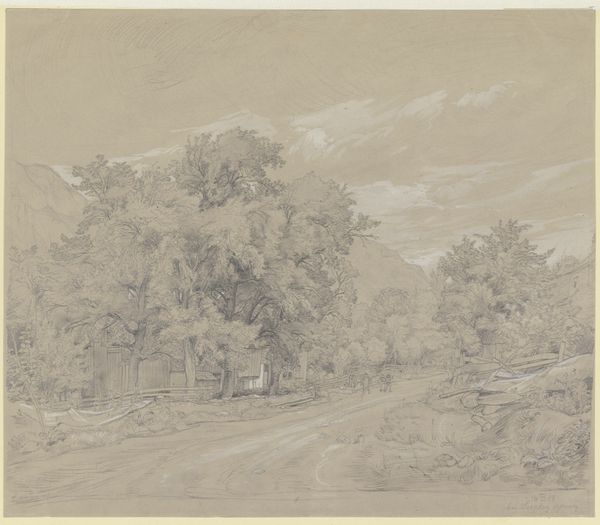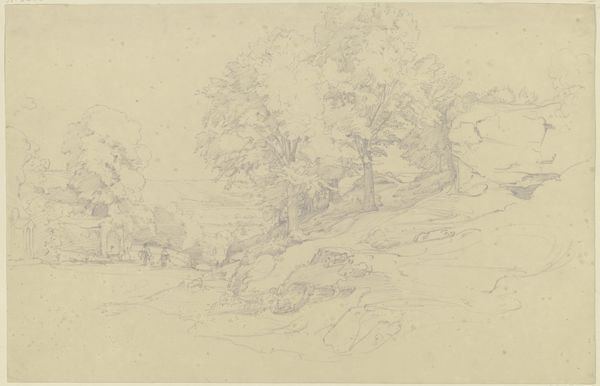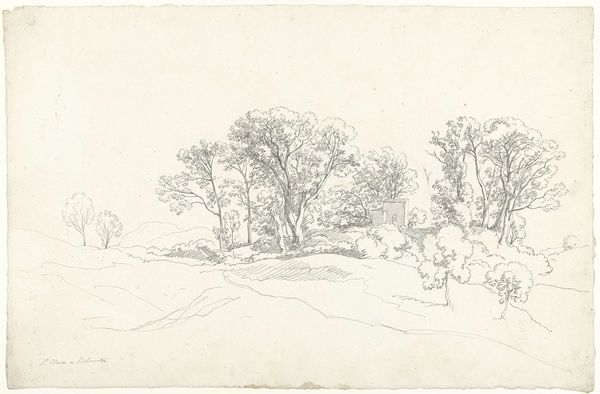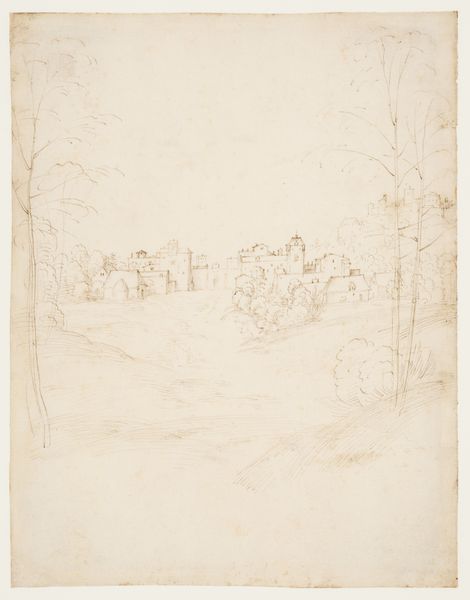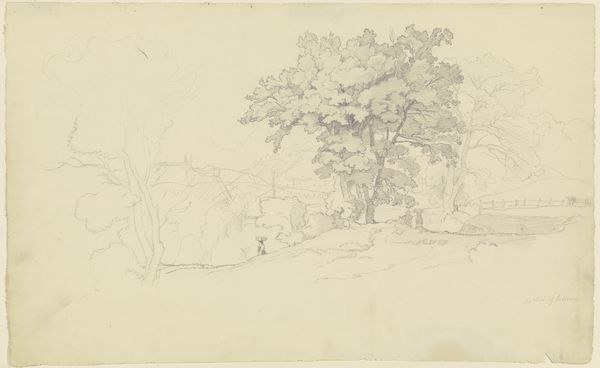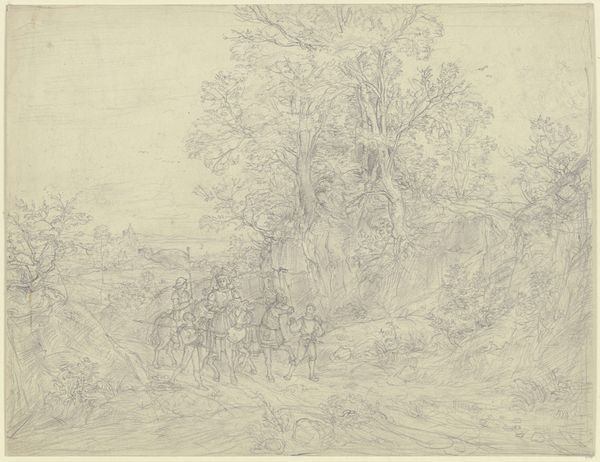
drawing, paper, pencil
#
drawing
#
landscape
#
etching
#
paper
#
romanticism
#
pencil
Copyright: Public Domain
Editor: So, this is "Tree landscape," a pencil drawing on paper by Karl Peter Burnitz. It's currently at the Städel Museum. It’s kind of dreamlike, hazy. It’s mostly grey and white. What do you see in this piece? Curator: Well, initially, the overwhelming symbol here is "nature." Not just raw, untamed wilderness, but nature perceived through the lens of Romanticism. Notice how the artist captures not just the physical appearance of the trees, but their essence. Editor: Essence? What do you mean? Curator: Look at the almost ethereal quality, the way light seems to filter through the leaves. This wasn't merely a record of a place; it's an emotional response. How do you think the lone figure walking on a path informs the landscape? Editor: Hmm, the figure suggests the insignificance of the individual against the backdrop of the natural world, which aligns with the traditional ideas of Romanticism. Curator: Precisely! And it mirrors a very prevalent theme, which is mankind discovering something deeply spiritual by contemplating nature, maybe by facing sublime grandeur or even its decay. What would happen if there was no human figure here? Editor: If the figure were gone, I guess it might feel more timeless. Its presence emphasizes how fleeting a human life can be compared to trees that outlive us. Curator: Right. Burnitz is pointing to our shared humanity—to cultural memory, as expressed through enduring symbols like the tree. Anything surprise you? Editor: How such a simple pencil drawing on paper can convey so much. It shows how even simple landscapes contain a complexity when we analyze their parts. Curator: Yes! The symbol is more complex than one may assume at first sight!
Comments
No comments
Be the first to comment and join the conversation on the ultimate creative platform.
